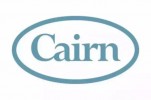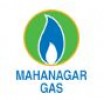
i
Gps
Renewables
Filter interviews by
Gps Renewables HR Associate Interview Questions and Answers
6 Interview questions
Form ABCD is a standardized document used for collecting and organizing information in a structured manner.
Form ABCD typically includes sections for personal information, contact details, educational background, work experience, and references.
Employers often use Form ABCD during the recruitment process to gather relevant information from job applicants.
Completing Form ABCD accurately and thoroughly is important f...
The HR Associate is responsible for handling employee payroll.
The HR Associate is responsible for processing payroll for all employees in the organization.
They ensure accurate calculation of wages, deductions, and taxes.
They may also handle issues related to payroll, such as resolving discrepancies or answering employee inquiries.
HR Associates may use payroll software to streamline the process and ensure complianc...
Grievance refers to a formal complaint or concern raised by an employee regarding their work environment, conditions, or treatment.
Grievances can include issues related to discrimination, harassment, workload, pay, or management decisions.
Employees may file a grievance with HR or management to seek resolution or address their concerns.
HR Associates play a key role in investigating and resolving grievances in accor...
The percentage of bonus deduction varies depending on company policy and individual circumstances.
Bonus deduction percentages can range from 0% to 50% or more.
Some companies have a fixed percentage for all employees, while others may have a sliding scale based on performance or salary level.
Examples: Company A deducts 10% of bonus for all employees, while Company B deducts 20% for employees earning over $100,000.
I...
I currently handle a team of 10 full-time employees and 5 contractors.
I manage a team of 10 full-time employees
I oversee the work of 5 contractors
I am responsible for coordinating tasks and projects among the team members
Yes, I have experience working on EPF, ESIC, and LWF portals.
Managed employee provident fund (EPF) contributions and withdrawals through the EPF portal.
Processed employee state insurance corporation (ESIC) benefits and claims via the ESIC portal.
Handled labor welfare fund (LWF) compliance and payments using the LWF portal.
Gps Renewables HR Associate Interview Experiences
1 interview found
I applied via Walk-in and was interviewed in Apr 2024. There was 1 interview round.
(7 Questions)
- Q1. What do you mean by Form ABCD?
- Ans.
Form ABCD is a standardized document used for collecting and organizing information in a structured manner.
Form ABCD typically includes sections for personal information, contact details, educational background, work experience, and references.
Employers often use Form ABCD during the recruitment process to gather relevant information from job applicants.
Completing Form ABCD accurately and thoroughly is important for pr...
- Q2. What is the percentage of bonus deduction?
- Ans.
The percentage of bonus deduction varies depending on company policy and individual circumstances.
Bonus deduction percentages can range from 0% to 50% or more.
Some companies have a fixed percentage for all employees, while others may have a sliding scale based on performance or salary level.
Examples: Company A deducts 10% of bonus for all employees, while Company B deducts 20% for employees earning over $100,000.
Indivi...
- Q3. Harayan current wages updates?
- Ans.
Harayan current wages updates are typically provided by the government or relevant authorities.
Harayan current wages updates are usually announced by the government or labor department.
Employers and employees can access this information through official websites or notifications.
Changes in minimum wages or salary structures may impact businesses and workers in Haryana.
- Q4. How much manpower handle & how much contractor handling?
- Ans.
I currently handle a team of 10 full-time employees and 5 contractors.
I manage a team of 10 full-time employees
I oversee the work of 5 contractors
I am responsible for coordinating tasks and projects among the team members
- Q5. How much employee's payroll handling?
- Ans.
The HR Associate is responsible for handling employee payroll.
The HR Associate is responsible for processing payroll for all employees in the organization.
They ensure accurate calculation of wages, deductions, and taxes.
They may also handle issues related to payroll, such as resolving discrepancies or answering employee inquiries.
HR Associates may use payroll software to streamline the process and ensure compliance wit...
- Q6. What do you mean by Grievance?
- Ans.
Grievance refers to a formal complaint or concern raised by an employee regarding their work environment, conditions, or treatment.
Grievances can include issues related to discrimination, harassment, workload, pay, or management decisions.
Employees may file a grievance with HR or management to seek resolution or address their concerns.
HR Associates play a key role in investigating and resolving grievances in accordance...
- Q7. Work on EPF , ESIC , LWF portal?
- Ans.
Yes, I have experience working on EPF, ESIC, and LWF portals.
Managed employee provident fund (EPF) contributions and withdrawals through the EPF portal.
Processed employee state insurance corporation (ESIC) benefits and claims via the ESIC portal.
Handled labor welfare fund (LWF) compliance and payments using the LWF portal.
Interview Preparation Tips
Top trending discussions




Interview questions from similar companies

I applied via Naukri.com and was interviewed before Jun 2020. There was 1 interview round.
Interview Questionnaire
28 Questions
- Q1. What is mean by safety
- Q2. What is LEL
- Q3. What is RA
- Q4. What is JSA/JHA
- Ans.
JSA/JHA stands for Job Safety Analysis/Job Hazard Analysis. It is a process of identifying potential hazards and risks in a job or task.
JSA/JHA is a systematic approach to identify and mitigate potential hazards in a job or task
It involves breaking down a job or task into steps and analyzing each step for potential hazards
The analysis includes identifying the hazards, assessing the risks, and implementing controls to m...
- Q5. Role of HSE
- Ans.
HSE plays a crucial role in ensuring the safety and well-being of employees and the environment.
HSE stands for Health, Safety, and Environment.
It involves identifying and assessing potential hazards and implementing measures to control or eliminate them.
HSE also includes training employees on safety procedures and emergency response plans.
Examples of HSE measures include wearing personal protective equipment, conductin...
- Q6. What is Hchem
- Ans.
Hchem is not a known term or acronym in the engineering field.
Hchem is not a commonly used term in engineering
It is possible that the interviewer misspoke or meant to ask a different question
Without more context, it is difficult to provide a more specific answer
- Q7. What is Hazop
- Q8. What is confined space
- Q9. What is work at height
- Q10. Hazard of confined space
- Ans.
Confined spaces pose a significant hazard due to limited entry and exit points, poor ventilation, and potential for hazardous substances.
Limited entry and exit points can make it difficult to escape in case of an emergency
Poor ventilation can lead to a buildup of toxic gases or lack of oxygen
Potential for hazardous substances such as chemicals, fumes, or dust
Examples include tanks, silos, sewers, and tunnels
Proper trai...
- Q11. Precautions of confined space
- Ans.
Precautions to be taken while working in confined spaces
Proper ventilation and air quality testing
Use of personal protective equipment
Proper lighting and communication equipment
Training and certification for workers
Emergency rescue plan in place
- Q12. What is LEL&UEL
- Q13. What is competent person
- Q14. What is fire
- Ans.
Fire is a chemical reaction that releases heat, light, and various gases.
Fire is a rapid oxidation process that occurs when fuel (such as wood, paper, or gasoline) combines with oxygen in the presence of heat or a spark.
It releases heat, light, and various gases such as carbon dioxide, water vapor, and nitrogen oxides.
Fire can be beneficial (such as for cooking or heating) or destructive (such as in wildfires or house ...
- Q15. Types of fire
- Ans.
There are four types of fire: Class A, Class B, Class C, and Class D.
Class A fires involve ordinary combustibles such as wood, paper, or cloth.
Class B fires involve flammable liquids or gases such as gasoline, oil, or propane.
Class C fires involve electrical equipment such as appliances, wiring, or circuit breakers.
Class D fires involve combustible metals such as magnesium, titanium, or sodium.
- Q16. Type of extinguisher
- Q17. Modes of heat transfer
- Ans.
Modes of heat transfer include conduction, convection, and radiation.
Conduction is the transfer of heat through a material without any movement of the material itself.
Convection is the transfer of heat through the movement of fluids, such as air or water.
Radiation is the transfer of heat through electromagnetic waves, such as from the sun or a fire.
- Q18. How to prevent fire
- Q19. What is msds
- Ans.
MSDS stands for Material Safety Data Sheet.
MSDS provides information about hazardous chemicals and substances.
It includes information about the physical and chemical properties of the substance, health hazards, precautions for safe handling and use, and emergency procedures.
MSDS is required by law for all hazardous chemicals and substances used in the workplace.
It is important to read and understand the MSDS before usi...
- Q20. How to do firefighting
- Ans.
Firefighting involves identifying and extinguishing fires to prevent damage and loss of life.
Assess the situation and determine the type and size of fire
Use appropriate firefighting equipment such as fire extinguishers, hoses, and pumps
Follow safety protocols and wear protective gear
Coordinate with other firefighters and emergency responders
Evacuate people from the affected area
Monitor the situation and ensure the fire...
- Q21. How to prevent the accident
- Ans.
Prevent accidents by identifying potential hazards and implementing safety measures.
Conduct regular safety audits and risk assessments
Provide proper training and education to employees
Implement safety protocols and procedures
Use appropriate safety equipment and gear
Encourage a culture of safety and accountability
Regularly review and update safety policies and procedures
- Q22. How to investigate the accident
- Q23. Emergency procedure
- Q24. What is H2s
- Ans.
H2S is a colorless, flammable, and toxic gas with a strong odor of rotten eggs.
H2S is commonly known as hydrogen sulfide.
It is produced naturally by the breakdown of organic matter and is found in natural gas, crude oil, and volcanic gases.
It is highly toxic and can cause respiratory failure, loss of consciousness, and even death.
H2S is used in various industries such as oil and gas, mining, and pulp and paper.
It is al...
- Q25. Properties of H2s
- Ans.
H2S is a colorless, flammable, and toxic gas with a strong odor of rotten eggs.
H2S is highly flammable and can ignite easily
It is toxic and can cause respiratory failure
It has a distinctive odor of rotten eggs
H2S is used in the production of sulfuric acid and in the petroleum industry
- Q26. Hirerchy procedure
- Q27. Permissible exposure limit of H2s,co,co2,methane
- Ans.
Permissible exposure limits (PEL) are the maximum allowable concentrations of hazardous substances in the workplace.
H2S: PEL is 10 ppm (parts per million) over an 8-hour workday
CO: PEL is 50 ppm over an 8-hour workday
CO2: No specific PEL, but recommended exposure limit is 5,000 ppm over an 8-hour workday
Methane: No specific PEL, but recommended exposure limit is 1,000 ppm over an 8-hour workday
- Q28. Short term exposure limit of H2s
- Ans.
Short term exposure limit (STEL) of H2S is 10 ppm.
STEL is the maximum concentration of a substance that a worker can be exposed to for a short period of time without suffering from immediate or long-term health effects.
The STEL for H2S is set at 10 ppm (parts per million) by OSHA (Occupational Safety and Health Administration).
Exposure to H2S at levels above the STEL can cause symptoms such as eye irritation, headache,...
Interview Preparation Tips

I applied via Recruitment Consultant and was interviewed in Dec 2020. There were 6 interview rounds.
Interview Questionnaire
2 Questions
- Q1. 1st round is technical , 2nd is values & behaviors , 3rd is assessment road
- Q2. Be clear on values & behaviours , practice assement round offline before attempting
Interview Preparation Tips

I applied via Naukri.com and was interviewed in Oct 2020. There were 3 interview rounds.
Interview Questionnaire
1 Question
- Q1. The HR round was very pathetic. Sreethala took my HR round.
Interview Preparation Tips
Mumbai location. They will take all the interview rounds. The HR will ask you to submit all documents and last moment they will cancel your candidature without giving you any specific reason.

I applied via Company Website and was interviewed in Feb 2021. There were 3 interview rounds.
Interview Questionnaire
1 Question
- Q1. Introduce yourself? What are roles and responsibilities at Current organization? Tell me procedure for Domestic connection? Administration skills?
Interview Preparation Tips
Following point should be in consideration:-
1) Be honest in your CV as well as in an Interview.
Mentioned the things in CV which are your actual responsibilities. As Interviewer are most experienced so we can't fooled them.
2) Talk on Facts.
3) Be a realistic person.
4) Avoid topic you are less known for.
5) Ideas should be practical and workable.
Lastly, all the best to all of friends for your interviews and just do it.

Interview Questionnaire
1 Question
- Q1. Technical Questions related to my field were asked.
Interview Preparation Tips

I applied via Recruitment Consulltant and was interviewed in Jul 2022. There were 2 interview rounds.

(3 Questions)
- Q1. Asking about oisd and lpg basic
- Q2. Lpg ,oisd 144 and 169
- Q3. Salary discussion .Tamil is mandatory for this company
Interview Preparation Tips

I applied via Naukri.com and was interviewed before Aug 2022. There were 3 interview rounds.

(1 Question)
- Q1. Background of candidate
(1 Question)
- Q1. Technical & previous year experience
Interview Preparation Tips

I applied via Recruitment Consulltant and was interviewed before Oct 2022. There were 5 interview rounds.

(1 Question)
- Q1. A general HR questions
(1 Question)
- Q1. About last company and roles
2-3 Module of Aptitude and psychometric test
(1 Question)
- Q1. One on one with the VP/CEO

(2 Questions)
- Q1. Reason to switch the job?
- Q2. What is your expectation?
Gps Renewables Interview FAQs
Tell us how to improve this page.
Gps Renewables Interviews By Designations
- Gps Renewables Senior HR Executive Interview Questions
- Gps Renewables Senior Engineer Interview Questions
- Gps Renewables Project Manager Interview Questions
- Gps Renewables Mechanical Technician Interview Questions
- Gps Renewables Senior Electrical Engineer Interview Questions
- Gps Renewables Assistant Manager Interview Questions
- Gps Renewables Sr Executive- HSE Interview Questions
- Gps Renewables Senior Civil Engineer Interview Questions
- Show more
Overall Interview Experience Rating
based on 1 interview experience
Difficulty level
Duration
Interview Questions from Similar Companies
|
Senior Engineer
18
salaries
| ₹7.1 L/yr - ₹12.5 L/yr |
|
Assistant Manager
17
salaries
| ₹9.6 L/yr - ₹13 L/yr |
|
Scientist
10
salaries
| ₹11.5 L/yr - ₹12.5 L/yr |
|
Assistant Project Manager
10
salaries
| ₹10 L/yr - ₹16 L/yr |
|
Project Manager
9
salaries
| ₹16.5 L/yr - ₹20.8 L/yr |

Petrofac

Baker Hughes

bp

Cairn Energy
- Home >
- Interviews >
- Gps Renewables Interview Questions














